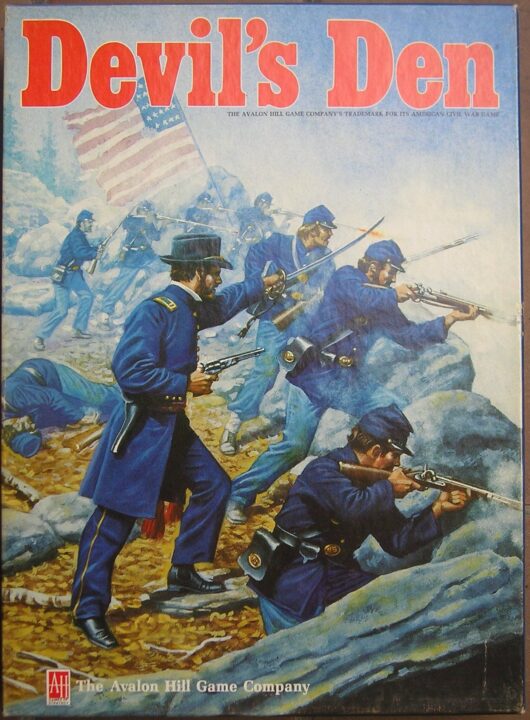Some games promise epic tales of adventure, but end with your friends flipping the table—Devil’s Den actually encourages it. Welcome to my review, where I recount the chaos, laughter, and occasional finger-pointing that broke out in my living room. Hold onto your pitchfork, because this is not your average cozy board game night. Let’s see if Devil’s Den is worth unleashing on your game group!
How It Plays
Setting Up
First, slap the board down on a table and deal everyone their sneaky Demon cards. Set the souls, traps, and tokens in piles nearby. Give each player their starting tokens—no peeking! Place the Devil pawn in the middle. Let the plotting begin.
Gameplay
On your turn, move your demon across the board, picking up souls and dodging traps. You can bribe, block, or betray your friends. Cards give you nasty powers, but use them wisely. Plan your moves, keep an eye out for double-crosses, and try not to get zapped by surprise events—because they come out of nowhere like my Aunt Linda at family bingo.
Winning the Game
Collect the most souls by the end of the game, and you’ll claim victory. Easy, right? Not when your best mate just stole your last soul and laughed in your face. Whoever has the most souls when the Devil pawn reaches the last space wins. Simple to say, brutal to pull off.
Want to know more? Read our extensive strategy guide for Devil’s Den.
Atmosphere and Theme in Devil’s Den: Creepy, Cozy, and Cackling
The theme in Devil’s Den is straight out of a late-night, B-grade horror flick. Picture this: you walk into a room lit by a single flickering bulb, cobwebs everywhere, and then someone hands you a board game instead of a chainsaw. That’s exactly the vibe Devil’s Den gives you. The art is moody and dark, but thankfully not so scary that my dog started barking.
The game’s story puts you smack in the middle of an old haunted inn. In theory, we are all trapped together, but judging by the way my friend Jill laughed maniacally when the cursed dice showed up, I’d say it’s more of a party than a séance. The little details keep you in the story – from the slightly cheesy item cards to the rooms that look like they were decorated by a gothic grandma. It doesn’t take itself too seriously, which is good, because the only thing I take seriously is my snack pile.
Atmosphere is the real winner here. There are just enough spooks to keep you looking over your shoulder, but not enough to make anyone actually run out of the room (except Steve, who’s scared of his own shadow). The way Devil’s Den wraps you in its eerie world makes every round feel like late-night ghost stories with friends – minus the need for toilet paper mummies.
So, how does this perfectly spooky vibe mix with the actual rules and interactions? Well, grab your flashlight, because next up, I’ll chat about the game mechanics and whether they’re as hair-raising as the artwork!
How Devil’s Den Keeps Players Scheming and Screaming: Game Mechanics & Interaction
Let me tell you, the mechanics in Devil’s Den are as sneaky as that friend who claims they ‘never’ cheat but always wins. Each turn you pick your actions from a smorgasbord of choices: sneak through tunnels, trade souls (that’s right, actual souls), or sabotage your rivals. It gets wild fast. The game uses action cards, and each one can spell your doom or deliver a sweet comeback. If you ever wanted to betray your friends and call it ‘tactics,’ this is the time.
What I like most is the constant player interaction. The designers must love chaos because the player vs. player aspect is front and center. You’re not sitting around waiting for your turn here—someone is always plotting against you or asking you for an alliance. Most of my games ended with someone fake-laughing through gritted teeth. The voting rounds—where you get to bless or doom a player—are as tense as my last attempt at karaoke night.
The ways you can mess with each other are clever, and the game keeps things fresh with event cards that change the rules on the fly. The mechanics aren’t overly complex, so you won’t need to consult an ancient scroll (or the rulebook) every two minutes. Everything stays moving and sharp, like a devil’s pitchfork.
So get ready, because next we’ll see if the Devil’s Den is a game of wit, luck, or just pure mischief!
Is Devil’s Den a Game of Skill or Just Pure Luck?
Alright, let’s talk turkey: Everyone has that friend who seems to win by just showing up (I’m looking at you, Greg). So how much does luck actually matter in Devil’s Den? Frankly, you can’t ignore it. Dice rolls and card draws pop up almost every turn, and you feel their sting—or their blessing—right in the gut. I’ve seen strategies crumble when someone pulls a lucky card at just the right time. It feels a bit like playing poker with a haunted deck; skill helps, but spooky fate has its hands in the pot.
But don’t clutch your strategy guides just yet—there’s room for clever play. Timing your moves and reading other players’ faces can help you dodge devilish traps and set up some sweet plays of your own. I once bluffed my way out of being banished to the Catacombs, even though I had the worst hand at the table. That said, If you’re the type who hates getting kneecapped by sheer chance, this might grind your gears. Devil’s Den walks a wobbly tightrope between planning and plain old luck. Sometimes it’s a thrilling dance, and sometimes it feels like the dance floor’s been pulled out from under you.
Crave the dirt on which bits will last after ten plays, and which will fall apart faster than your strategy? Stick around, because next up: replay value and components—spooky secrets ahead!
Devil’s Den: Replay Value and Component Quality
If there’s one thing I love about board games, it’s when they keep me coming back for more — like that bowl of chips I totally didn’t eat in one sitting. Devil’s Den does a pretty good job of tempting you for repeat visits. Every session feels different, mainly because of the choices you and your sneaky friends make, and the changing objectives. You might be plotting with someone only to realize two rounds later they’ve betrayed you. Again. (Looking at you, Steve.) That makes every playthrough a new adventure, or more often, a new grudge.
Now, let’s talk about what you’re actually playing with. The component quality here is a pleasant surprise. The board art oozes spooky charm — I swear the haunted trees gave me the stink-eye. The cards feel decent, though if your group is as clumsy as mine (spilled soda count: three), you might want sleeves. The tokens are chunky enough for my fat fingers, and the little devil figurines are a nice touch. One of mine looked like he was giving the peace sign, or maybe flipping me off. Hard to tell.
For replay value, Devil’s Den gets high marks. You won’t see every sneaky trick in one night, and the shifting alliances keep things feeling fresh. On the component front, it looks great and stands up to our “enthusiastic” play style (read: chaos). Do I recommend it? If you like a game that mixes eerie vibes with plenty of backstabbing and you value sturdy bits, I say go for it. Just keep an eye on your friends.
Conclusion
So, that wraps up my journey through Devil’s Den—with only minor emotional scars from all the betrayals. This game nails the spooky theme, offers lots of laughs, and keeps everyone guessing (and plotting). The components feel sturdy, the replay value is strong, and it’s a blast if you love chaos and a bit of backstabbing. Just know that luck can turn the tables, which will annoy strategy fans. It isn’t perfect, but it’s still a wickedly fun ride that I’d pull out again. Thanks for reading my review—now go summon your most treacherous friends!


